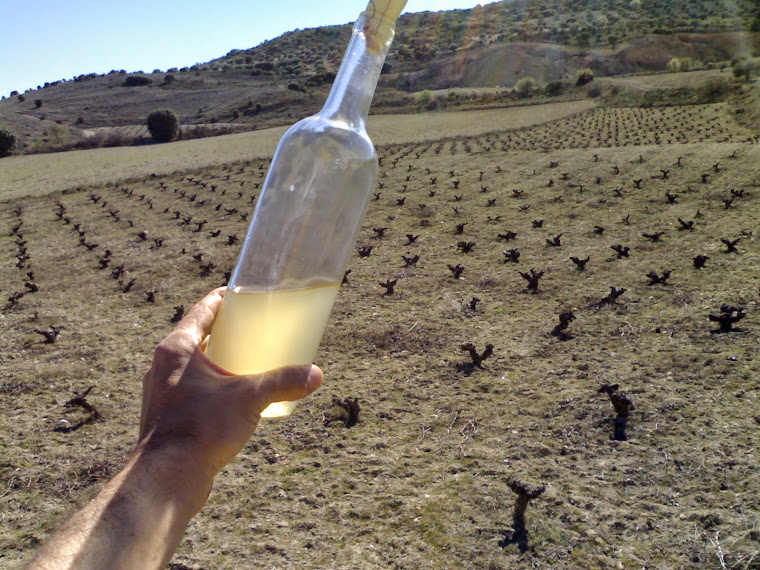Newly planted vines, with protective tubing
I decided to plant Tempranillo, because the vineyard is a field blend of Tempranillo and Airén already, but there's not much Tempranillo - only just enough to make one barrel of crianza. I toyed with the idea of planting Malvar, or Torrontés or some other interesting local variety, but in the end I thought that there would be no point, as the quantity of wine I could make with it would be too small. I'll leave that idea for another project for the future.
More newly planted vines
But the most crucial decision here was not really the choice of variety, but the choice of rootstock. In this case, the most important criterion (more important than resistance to drought, or resistance to disease, or resistance to limestone) was the fact that this is not a new vineyard and that the existing vines (about 50 years old) are very well established; and so their root systems will be very deep and wide and will be competing strongly for the water and nutrients in the spaces where the new baby vines will be struggling to survive and grow. So the rootstock had to be a vigorous and hardy one. The one that was readily available and which was recommended to me was one called "Paulsen 1103", which is not only vigorous, but also tolerant to drought and to limestone soils.
Looking down into the tube
Well, that's half the job done this year. There's more to do next year! There are also about 100 vines in the vineyard where the grafted variety has died, for whatever reason, but where the rootstock is alive and kicking. These will have to be cut back and grafted.
They are so vigorous that in summer they turn into monsters like this one below:
 |
| A 'wild' vine, where the rootstock itself has sprouted |
 |
| Tiny and numerous clusters on a 'wild' rootstock sprouted vine |
And there are also about 20-30 vines that are dead and which will have to be pulled out.
I'm so glad I managed to do that task. It gets depressing when you think about doing something for so many years but never get round to doing it :)





No comments:
Post a Comment
Please write a comment to this post.